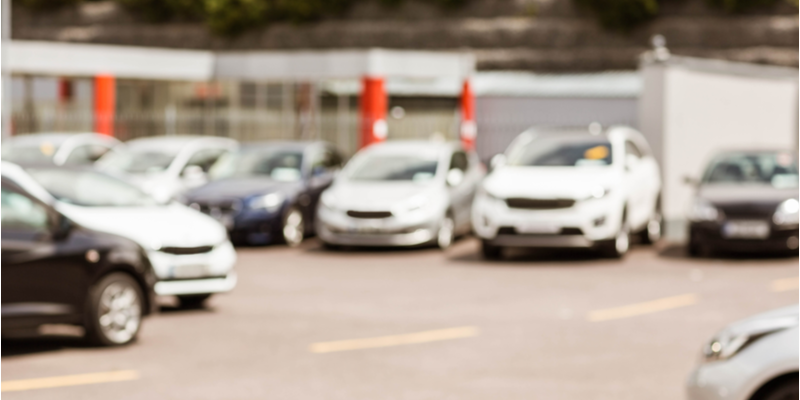Can video analytics reduce car dealership crime?
- Featured Post
- Physical security
- Security for businesses

When it comes to security, car dealerships often find themselves in a dilemma - keeping their valuable stock on display attracts customers, but it also attracts criminals. Dealerships regularly have to contend with the risk of stolen cars, stolen parts, and vandalism.
Forecourts are large, open spaces, ideal for showing off all the different makes and models that a dealership has to offer. However, a large, open area is difficult to secure, and often the perimeter is easy to break through. For many car lots, moving stock indoors at night is simply not an option. So how do you avoid your business being seen as an easy target?
Securing your site
Physical security is one method, although over such an open area, it has its limitations. A security guard would find it difficult to oversee an entire site; for guards to be really effective, a car lot would need several, which can become expensive to maintain. Physical barriers like bollards and perimeter fences help to reduce intruders, but to have full oversight of your forecourt, video monitoring is the most efficient solution.
Video monitoring is a cost-effective way to oversee and protect your entire site. It is particularly good at reducing vehicle-related crime: in the UK, the presence of security cameras in car parks reduced vehicle crime by 51%. As David Raske, Chief Marketing and Business Development Officer of Bastion Security explains:
“Rather than just capturing video of crime that already occurred, it’s far better to stop crime before it happens. With our Active Security Monitoring service, we intervene in real time (with a ‘Voicedown’ over loudspeaker, followed by police dispatch if necessary) to stop crime in progress.
“By hardening our client sites with consistent security responses, we not only respond to immediate threats, but deter crime over the long term. Specific benefits include a reduction of theft, damage to vehicles, vandalism, trespassing, loitering, and other ‘quality of life’ issues that dealerships face.”
Want to know the secret to better security, greater ROI and more effective use of time and resources? Check out our FREE whitepaper:
A false alarm hotspot
As is the case with every security solution, video surveillance comes with its own challenges. Security cameras detect movement through in-built sensors. The aim is to detect human activity. Yet outdoor areas are full of things that trigger the camera’s sensors, inundating video monitoring operators with false alarms.
As with any outdoor environment, animal activity and trees blowing around are common alarm triggers. Due to how they are set up and where they are located, car lots generate other kinds of false alarms too.
Many monitoring businesses Calipsa works with report that promotional flags, balloons, streamers and other signage all trigger alarms on sensitive camera sensors. If forecourts are situated next to large main roads, even the glare from the headlights of passing cars, and shadows of vehicles and people, are all enough to trigger a camera.
Bastion’s David Raske continues:
“Across all of our client sites, we see a significant overlap in events that cause false alarms. The dealership environment is often more complicated than other retail or commercial client locations, due to outdoor vehicle storage and changing configurations, a non-fenced perimeter, and other environmental issues, like promotional balloons and signage.
"Calipsa helps us filter out many of these false alarms, so our operators are more efficient in investigating and responding to actual security risks.”
Video analytics platforms like Calipsa’s False Alarm Filtering Platform reduce false alarms by up to 90%, making the jobs of video monitoring operators much easier when they are securing car dealerships. Our video analytics platform is powered by deep learning technology, which can identify between human and non-human activity.
Time to use video analytics
So, you’ve secured your site perimeter with fences and bollards, and you’ve installed security cameras that are checked by a video monitoring station. You even use video analytics to ensure all the false alarms generated on your site don’t clog up your monitoring operators’ workload. Surely there’s nothing else you can do to make your site secure?
In fact, there is. Video analytics software is an extremely powerful tool that enables you to do a number of things besides just filtering false alarms. The software only sends through alarms that contain human activity - but what about when people on site aren’t a threat?
With scheduling, you can set up the hours when you want the software to monitor your site, tailoring it to your business hours. This is especially useful if you have customers on site in the evenings, and you want them to browse without triggering intruder alarms.
Analytics also provides you with detailed reporting that enables you to see how all of your cameras are performing. Often, promotional flags, balloons and signage can obscure lines of vision on your cameras as well as generating false alarms.
It’s a good idea to choose an intelligent analytics platform with a reporting function that can help you take a thorough health check of your video security.
Want to know more about how intelligent video analytics could improve your site security?









No comments